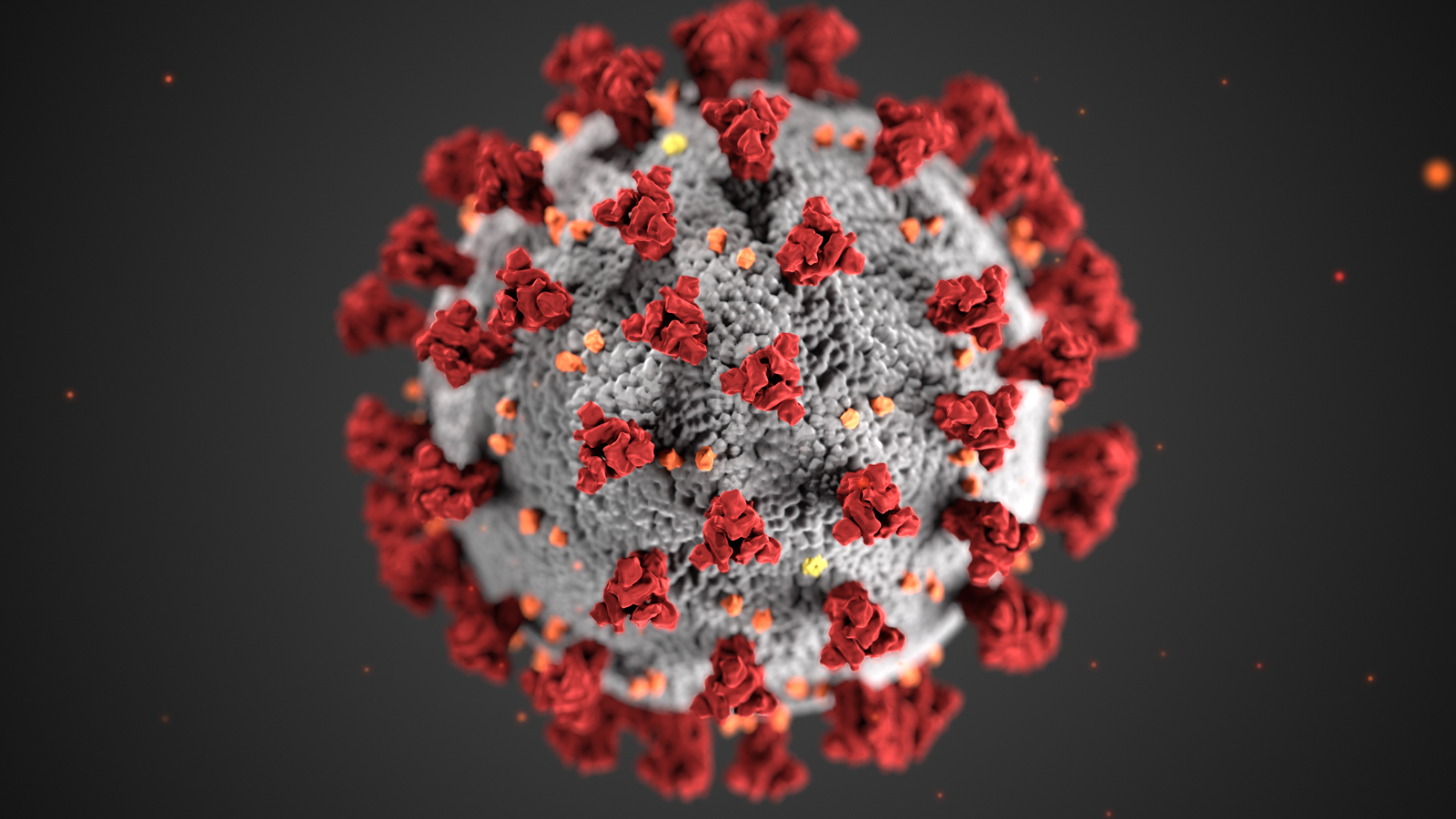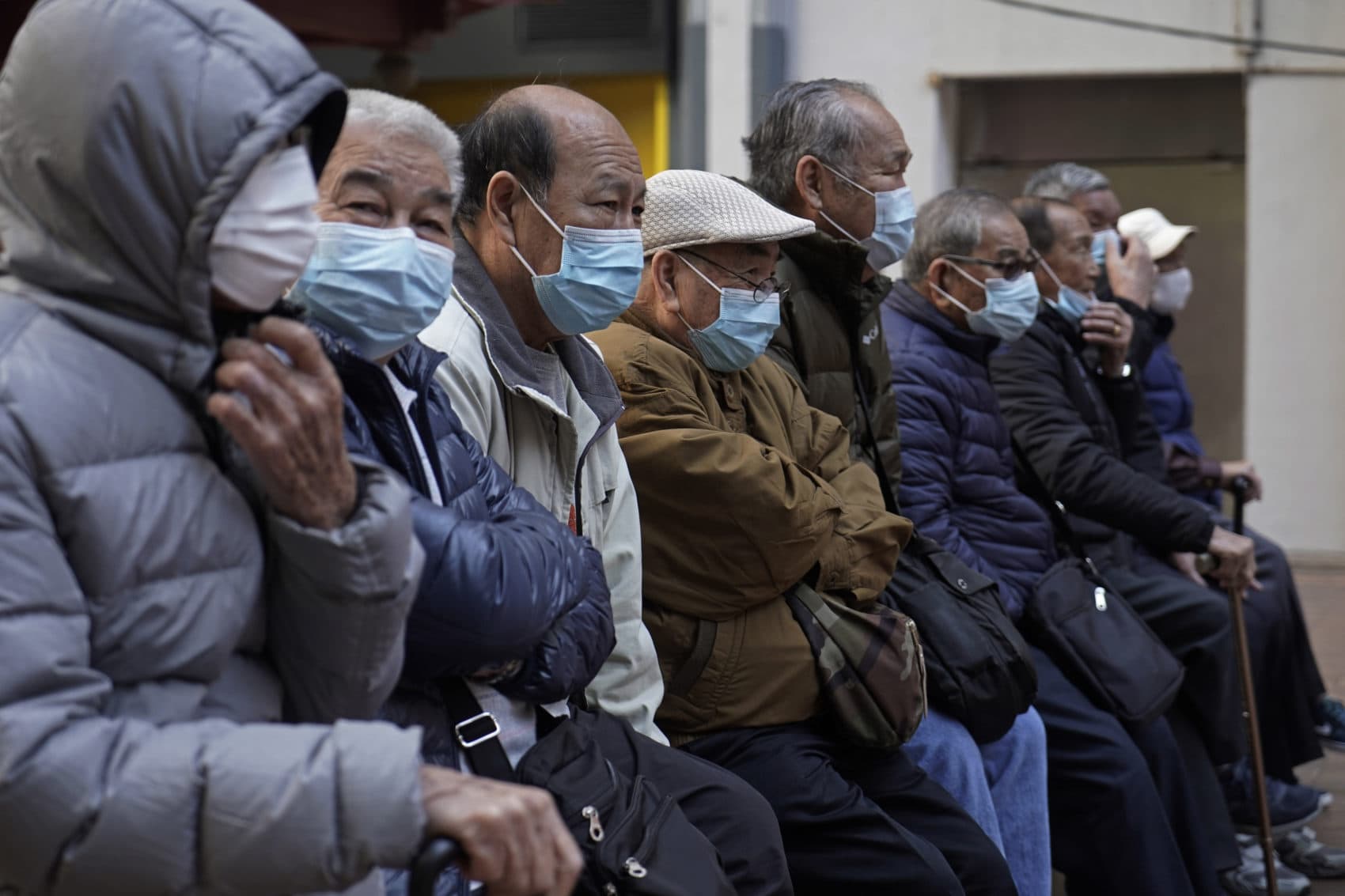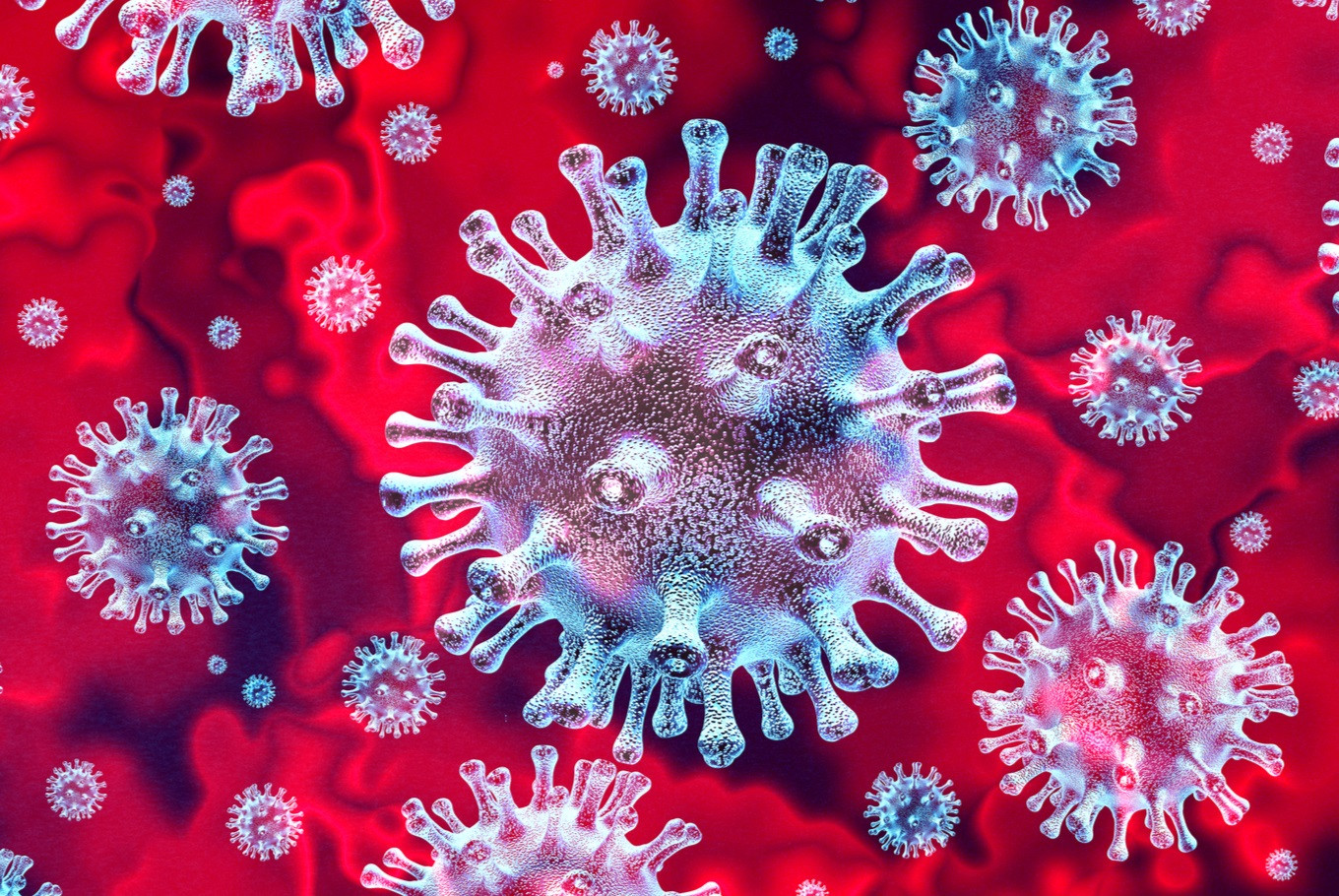COVID-19 transmission through aerosols: We have enough evidence, an expert explains
Until the messages change, including a clear description of the importance of the aerosol pathway, our ability to control the pandemic will be limited.
After many months of a COVID-19 pandemic and controlling a very harsh first wave with very restrictive measures, the coronavirus reappears strongly again all over the world. We have already learned that the pandemic is a tsunami in slow motion, and we are afraid of what may happen this fall and winter. Public health authorities, such as the World Health Organization (WHO) , tell us to stay one to two meters apart, to wash our hands, that we disinfect the surfaces we touch frequently and that we use masks.
But compliance with these measures is uneven, especially with regard to masks, and we hear daily cases where people don’t know how they got it. Outbreaks of super-spread, where one person infects many others, occur in crowded bars and at social gatherings, but not on beaches or in parks. No wonder people are confused.
To understand how to protect yourself, it is essential to have a clear physical description of the contagion routes. Contrary to what the WHO postulates, many scientists believe that a substantial fraction of COVID-19 contagion occurs through aerosols. The evidence for aerosols is stronger than the evidence for other avenues. It is time to be more forceful and tell the population what measures they should take to protect themselves. The sooner we do it, the sooner we can control the pandemic.

There are three possible forms of infection, two of which are considered most important by the WHO. The first is through “fomites,” when we touch surfaces or people contaminated with the virus, and then we touch our eyes, nostrils or mouth. At the beginning of the pandemic, concerns about the transmission of fomites led some people to wash food and packages with bleach. WHO now recognises that fomites are less important than other pathways. For example, an intensive hand-washing program in the UK reduced contagion by 16%. It is important to know that other viruses that, like SARS-CoV-2 (the one that causes COVID-19) have a lipid coat, they do not survive long in human hands. That means you would need to touch your eyes, nostrils or mouth shortly after touching a contaminated surface to become infected with the new coronavirus.
 For decades it was thought that tuberculosis was transmitted by droplets and fomites, based on the observation of infection in close proximity. But it was later shown that tuberculosis can only be transmitted through aerosols. The WHO has made a similar mistake with COVID-19.
For decades it was thought that tuberculosis was transmitted by droplets and fomites, based on the observation of infection in close proximity. But it was later shown that tuberculosis can only be transmitted through aerosols. The WHO has made a similar mistake with COVID-19.
The second possibility of contagion of COVID-19 is through droplets, small particles of saliva or respiratory fluid that infected people expel when they cough, sneeze or simply speak. The droplets are propelled by air, but by their weight, they fall to the ground within 1 to 2 meters. The WHO maintains that the virus is transmitted mainly through droplets, because many infections occur in situations of close proximity, for example speaking without respecting the social distance.
They have reached that conclusion despite the fact that there is no direct evidence of transmission through this route. Not only for COVID-19, but droplet transmission has never been directly demonstrated for any disease in the history of medicine. Published research, which has been confirmed, shows that droplets are only important when coughing and sneezing and that aerosols dominate contagion while talking in close proximity. Many infectious diseases, such as COVID-19, spread more easily when the infected person and the susceptible person are close to each other.
We must pay much more attention to the potential third way, transmission “through aerosols.” This pathway is similar to droplet transmission, except that the particles of saliva or respiratory fluid are so small that they can remain in the air for minutes to hours. Some people also refer to this route as contagion “through the air”, but it is better to avoid that expression since for health personnel it evokes extremely communicable diseases, and COVID-19 is not. To understand the scale of aerosols, keep in mind that a human hair has a diameter of approximately 80 microns, and aerosols smaller than approximately 50 microns can float in the air long enough to be inhaled. The virus is only 0.1 microns, so there is room for many viruses in one spray.
Transmission of Covid-19 through aerosols
Fomites and droplets have dominated the media’s explanations of COVID-19 transmission. While the WHO states that aerosols could cause transmission in some very specific situations, both organisations argue that this pathway is less relevant. This is a major mistake. That is why the WHO, along with 239 scientists, to reassess their position. The WHO’s response was to timidly update its position, but it remains highly sceptical about the importance of this pathway.

The available evidence strongly supports aerosol transmission, and there are no strong arguments against it. We know that aerosols contain infectious viruses
The available evidence strongly supports aerosol transmission, and there are no strong arguments against it. We know that aerosols contain infectious viruses. To understand aerosol transmission, it is helpful to use cigarette smoke as an analogy. Smoke is an aerosol. Contact tracing has found that much of COVID-19 transmission occurs in close proximity, but also that many people who share the same home with an infected person do not contract the disease. Imagine sharing a home with a smoker – if you were near the smoker while talking, you would inhale a large amount of smoke. Replace the smoke with aerosols that contain viruses, which behave very similarly, and the impact would be the same: the closer you are to someone who exhales virus-bearing aerosols, the more likely you are to breathe in enough virus to release them. produce the contagion. Aerosols dominate transmission and droplets are almost negligible.
If you are on the other side of the room, you will inhale much less smoke. But in a poorly ventilated room, smoke will build up, and people in the room may end up inhaling a lot of smoke over time. We know that when we speak we emit 10 times more aerosols than when we breathe and that when we sing and shout that emission increases 50 times. In fact, outbreaks often occur indoors with crowded and poorly ventilated spaces, such as when singing at karaoke parties, talking in bars, and working out in gyms.
Outbreaks of super spread, in which one person infects many others, occur almost exclusively indoors. These outbreaks, believed to be sustaining the pandemic, are easily explained if we take aerosols into account and are very difficult or impossible to explain considering only droplets or fomites as the main routes of contagion, as the WHO maintains.
In addition, the droplets move ballistically, as in the famous video game Angry Birds, while the aerosols, such as smoke, disperse much more quickly. Contact tracing also shows that the outside is 20 times safer than the inside, which can only be explained if aerosol transmission predominates. Similar coronaviruses like those that caused SARS and MERS were also transmitted via aerosols, although those findings met as much resistance as we are facing now.
What does this new understanding of the importance of aerosols in the transmission of COVID-19 mean, and how can we better protect ourselves with that knowledge?
The visual analogy of smoke can help guide our risk assessment and risk reduction strategies. We just have to imagine that everyone else we meet is smoking and that the goal is to breathe as little smoke as possible. But COVID-19 is not very contagious in most situations, unlike, for example, measles: the CDC says that being around a person infected with COVID-19 for 15 minutes can cause contagion. This gives us an estimate of the amount of “exhaled smoke” that must be inhaled to become infected. Inhaling a little “smoke” here and there is usually not a problem, but inhaling a lot of “smoke” for a long period of time without a mask is risky.
Given this new understanding of contagion, we must first continue to do what has already been recommended: wash our hands, keep a distance of two meters, etc. But that is not enough. Many people still believe that if they stay 1 to 2 meters away from others (out of the range of ballistic droplets, as directed by the WHO) and are rigorous with hand washing, the probability of contagion indoors it is almost zero. This confusion is no accident: the WHO continues to recommend masks indoors only if a distance of one meter cannot be maintained. Until the messages change, including a clear description of the importance of the aerosol pathway, our ability to control the pandemic will be limited.

A new, coherent and logical set of recommendations should emerge to reduce the transmission of aerosols. Thinking about smoke allows us to apply it to other situations, be it a classroom, a store or a park, to understand how to protect ourselves. In terms of specific behaviours, avoid as many crowded places as possible, where some are not wearing masks, indoors, with low ventilation, close proximity, long duration, or where people are talking, singing, or yelling. These are the most important risk factors in mathematical models that estimate the probability of contagion by aerosols, but they can also be understood simply as factors that affect the amount of “smoke” we would inhale.
First, we should do as many outdoor activities as possible, as New York schools did to prevent the spread of TB a century ago, despite the tough times in winters. COVID-19 transmission is possible outdoors in the vicinity of an infected person but is much less likely than indoors. That said, going outside is not magical protection against contagion – a windy day in an open area while keeping our distance is very safe, but a close conversation without a mask on a narrow street between tall buildings with little air movement is risky. Since it is known for a fact that being outdoors reduces risk, it is amazing that the parks are not being reserved and organised to teach all possible classes there.
Second, masks are essential, even when social distance can be maintained. There is much evidence that the universal use of masks could greatly reduce contagion, use surgical masks or just good-quality cloth. What is clear is that we must pay attention that the masks fit well, since they are not only a barrier against ballistic droplets but also must prevent the “smoke” from entering (or leaving) through the gaps. We should not remove our masks to speak or allow someone to speak to us without a mask, because we exhale ten times more aerosols when we speak than when we breathe.
We need to increase the amount of indoor air that is replaced by outdoor air, by opening windows or adjusting mechanical systems. We need better filters installed in many ventilation systems that recirculate part of the air.
It is important to think about ventilation and air filtering. We rarely think about ventilation in public places. But in these times, we have to learn to better use these systems to reduce risk. These actions can be more expensive and it is very important to analyse and prioritise them objectively. We need to increase the amount of indoor air that is replaced by outdoor air, by opening windows or adjusting mechanical systems. We need better filters installed in many ventilation systems that recirculate some of the air. We can use affordable carbon dioxide meters to identify the most dangerous public spaces, under-ventilated and occupied by many people, and give priority to the ventilation of these spaces.
Portable HEPA filters work well to reduce virus aerosols but are unfortunately expensive. Temporary air filtration systems can easily be manufactured. Numerous tests have been shown to work, also in scientific papers, and they have been used for years in China to reduce the impact of pollution on homes. They can be noisy and are not a long-term solution, but they can help protect us for months to come. Ultraviolet germicidal systems they can help in some situations, but only if ventilation and filtering are not enough. Other “air cleaning” techniques have been less studied and should be avoided, especially the spraying of disinfectants.
We must also remember that cleaning the air, like any other measure, reduces the probability of contagion but does not eliminate it: results obtained from simulations of the case of the United States choir suggest that with a large additional amount of ventilation or air filtering, the infections would have been half of those that actually occurred. It is the sum of measures that significantly reduce the risk of contagion. An approach with many “layers of protection,” with the use of outdoors, masks, with reduced density and duration, as well as ventilation and filtration, is still essential to reduce risk.
Schools should invest as much or more in ventilating and filtering the air than in cleaning surfaces
Schools should invest as much or more in ventilating and filtering the air than in cleaning surfaces. And it’s clear that beaches are safe with adequate distance (and possibly with face masks depending on distance), while restaurant interiors need to be approached with much more caution.
The fierce resistance to recognising the likelihood that aerosols are an important means of transmission of COVID-19 dates back to the legacy of Dr Charles Chapin, an American public health researcher. Trying to disprove once and for all the theory of miasmas, ghostly clouds that spread, he argued in his book The causes and modes of infection, published in 1910, that aerosol transmission was almost impossible. “It will be a great relief to most people to free themselves from the spectre of infected air, a spectre that has haunted the human race since the time of Hippocrates,” wrote Chapin. The great impact of his book was somewhat fortuitous: it came at a time when enough evidence had accumulated on the transmission of different infectious diseases since the discovery of germs by Pasteur.in the 1860s, but before we had the technology to measure aerosols. Chapin’s findings became the paradigm for infectious disease transmission, which has so far dominated the ideas (and recommendations) of health authorities, including WHO staff and committees.
Given this deep disbelief about aerosol transmission, it has only been accepted that diseases such as measles and chickenpox are transmitted this way; they were so contagious that the medical community could not ignore the evidence. Some less contagious respiratory diseases were described as due to droplet and fomite contagion, even when they clearly had an aerosol component. This stance has created over the years the (unfounded) perception of healthcare personnel that any disease transmitted through aerosols must be extremely contagious.
 But 110 years later, the nuances and importance of respiratory disease transmission by aerosols are finally being revealed. Many scientists from many fields have been involved in this issue, which has become a matter of great social interest. Advances in this area will have important implications for the COVID-19 epidemic and other future pandemics, and also for the control of future recurrent respiratory infections such as influenza. But now, WHO and the rest of the national and international agencies must begin to communicate risk reduction strategies. Otherwise, they hamper our ability to counteract the negative health consequences and increased mortality from COVID-19.
But 110 years later, the nuances and importance of respiratory disease transmission by aerosols are finally being revealed. Many scientists from many fields have been involved in this issue, which has become a matter of great social interest. Advances in this area will have important implications for the COVID-19 epidemic and other future pandemics, and also for the control of future recurrent respiratory infections such as influenza. But now, WHO and the rest of the national and international agencies must begin to communicate risk reduction strategies. Otherwise, they hamper our ability to counteract the negative health consequences and increased mortality from COVID-19.




